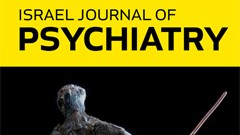
“Anandamide is an endogenous ligand at both the inhibitory cannabinoid CB(1) receptor and the excitatory vanilloid receptor 1 (VR1). The CB(1) receptor and vanilloid VR1 receptor are expressed in about 50% and 40% of dorsal root ganglion neurons, respectively. While all vanilloid VR1 receptor-expressing cells belong to the calcitonin gene-related peptide-containing and isolectin B4-binding sub-populations of nociceptive primary sensory neurons, about 80% of the cannabinoid CB(1) receptor-expressing cells belong to those sub-populations. Furthermore, all vanilloid VR1 receptor-expressing cells co-express the cannabinoid CB(1) receptor.
In agreement with these findings, neonatal capsaicin treatment that induces degeneration of capsaicin-sensitive, vanilloid VR1 receptor-expressing, thin, unmyelinated, nociceptive primary afferent fibres significantly reduced the cannabinoid CB(1) receptor immunostaining in the superficial spinal dorsal horn.
Synthetic cannabinoid CB(1) receptor agonists, which do not have affinity at the vanilloid VR1 receptor, and low concentrations of anandamide both reduce the frequency of miniature excitatory postsynaptic currents and electrical stimulation-evoked or capsaicin-induced excitatory postsynaptic currents in substantia gelatinosa cells in the spinal cord without any effect on their amplitude. These effects are blocked by selective cannabinoid CB(1) receptor antagonists. Furthermore, the paired-pulse ratio is increased while the postsynaptic response of substantia gelatinosa neurons induced by alpha-amino-3-hydroxy-5-methylisoxasole-propionic acid (AMPA) in the presence of tetrodotoxin is unchanged following cannabinoid CB(1) receptor activation.
These results strongly suggest that the cannabinoid CB(1) receptor is expressed presynaptically and that the activation of these receptors by synthetic cannabinoid CB(1) receptor agonists or low concentration of anandamide results in inhibition of transmitter release from nociceptive primary sensory neurons. High concentrations of anandamide, on the other hand, increase the frequency of miniature excitatory postsynaptic currents recorded from substantia gelatinosa neurons. This increase is blocked by ruthenium red, suggesting that this effect is mediated through the vanilloid VR1 receptor.
Thus, anandamide at high concentrations can activate the VR1 and produce an opposite, excitatory effect to its inhibitory action produced at low concentrations through cannabinoid CB(1) receptor activation. This “dual”, concentration-dependent effect of anandamide could be an important presynaptic modulatory mechanism in the spinal nociceptive system.”
https://www.ncbi.nlm.nih.gov/pubmed/11698030
https://www.sciencedirect.com/science/article/pii/S0014299901013097?via%3Dihub









